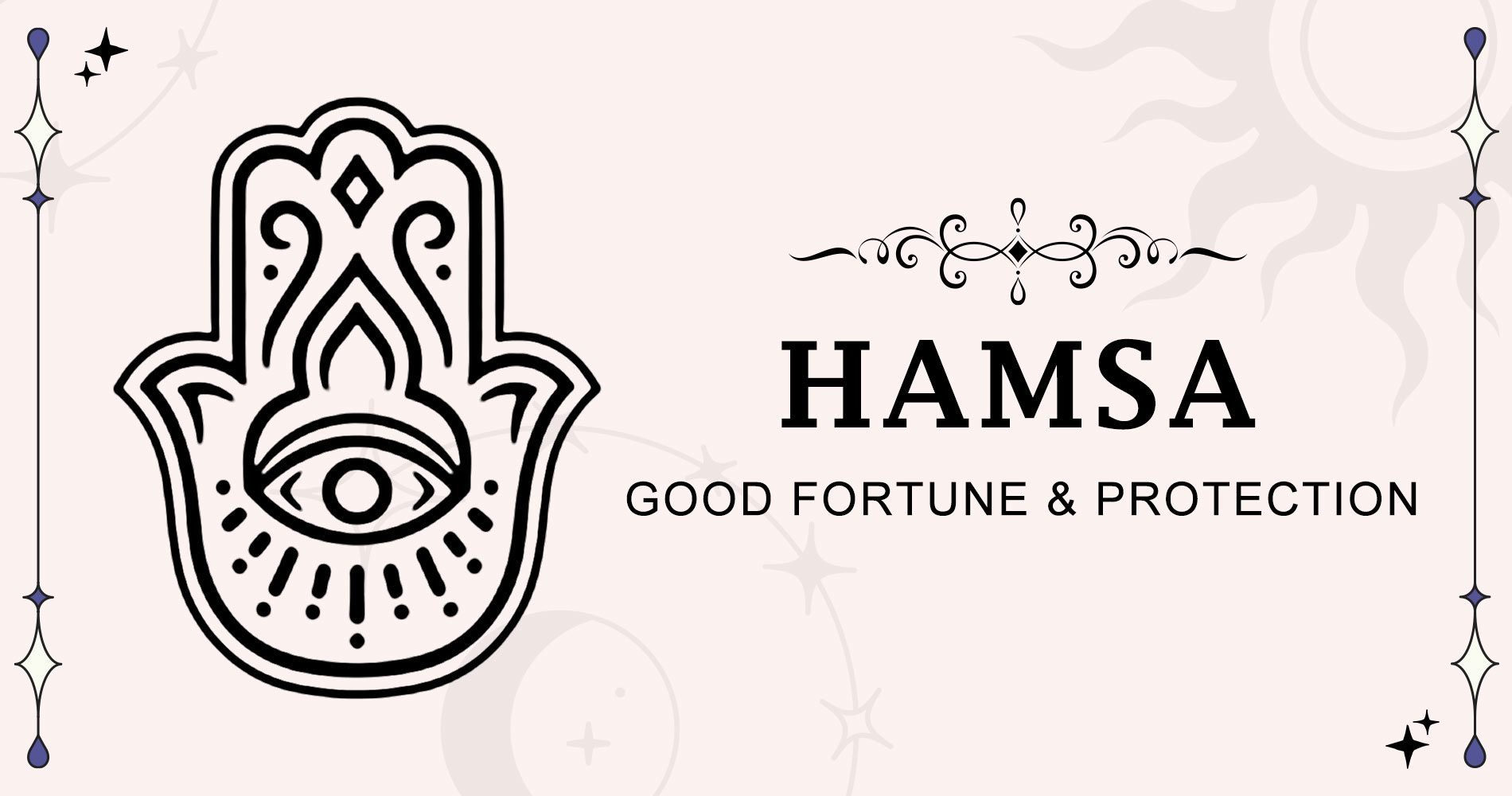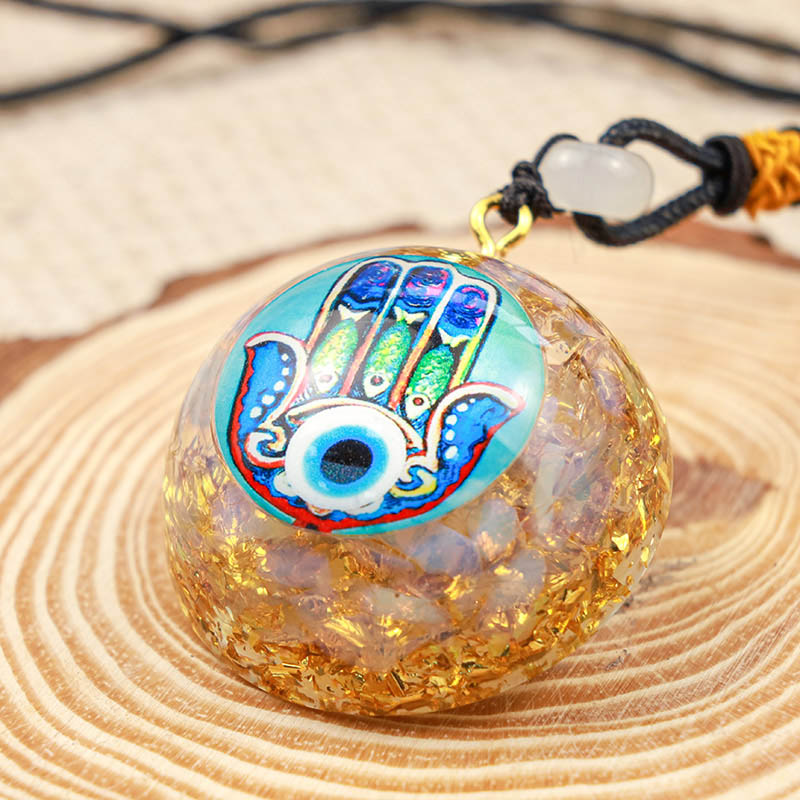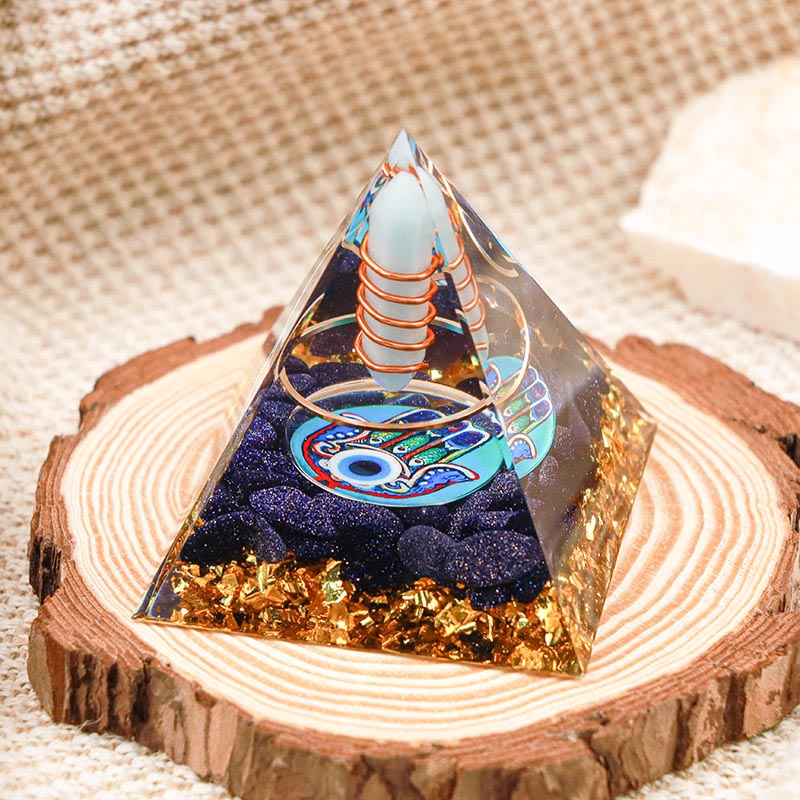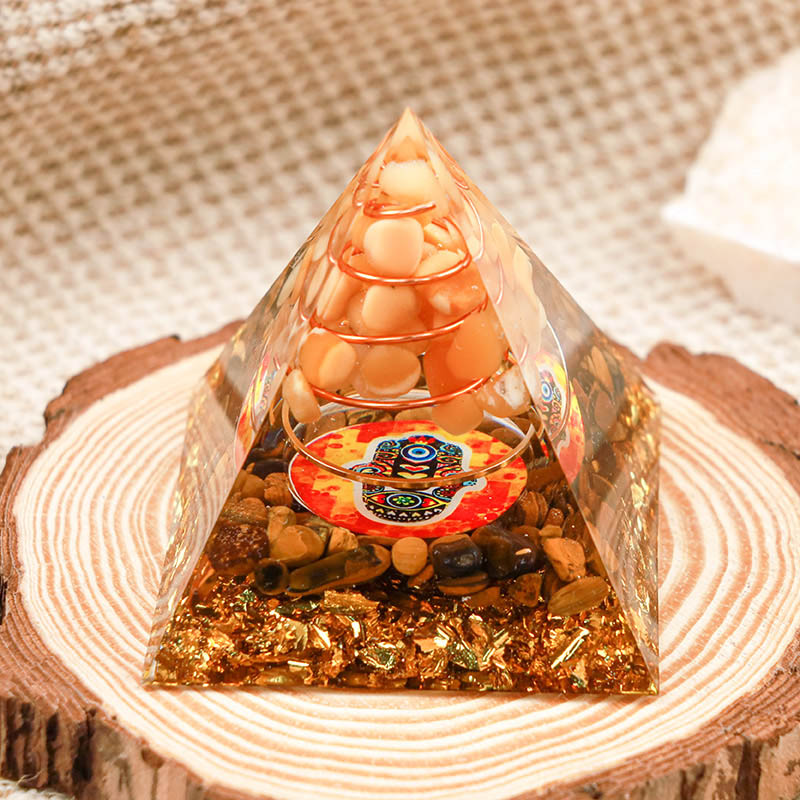About Hamsa Symbol - All You Need To Know
Jun 30, 2022
What is HAMSA?
The Hamsa, also known as the Hamsa hand, is a Middle Eastern amulet dating back to ancient times. In its most popular form, the amulet resembles a hand with three stretched fingers in the center and a curving thumb or pinky finger on either side.
It is believed to ward off the "evil eye." It's most often worn around the neck and on bracelets and charms, although it may also be found in ornamental elements such as tapestries.
The Hamsa is most commonly associated with Judaism, although it may be found in strains of Islam, Hinduism, Christianity, Buddhism, and a variety of other religions. In recent times, it has also been embraced by contemporary new-age spirituality.
Meaning of Hamsa
The Hamsa hand is a Middle Eastern talisman that represents God's Hand. It is a protective symbol in many religious traditions. It is believed to bring its owner joy, luck, good health, and good fortune. The hamsa hand has several spellings, including Hamish, Hamsa, Chamsa, and Khamsa.
This is also known as Aaron and Moses' sister Miriam's Hand and Fatima's Hand. There are two distinct varieties of the Hamsa hand: one resembles a normal hand, and the other has two identical thumbs.
The most popular of the two types is the second one. It's believed that the wearer of the Hamsa hand may wear it facing up or down, and it is thought to bestow good luck, balance, and protection from the "Ayin Hara," often known as The Evil Eye.
Depending on the tradition, the Hamsa hand may be interpreted in various ways. The term "Hamsa" comes from the five fingers on one's hand. In Hebrew, the number five is known as "Hamesh," and the fifth letter of the alphabet is "Hey," which is one of God's holy names.
The word Hamesh is a Hebrew term that refers to the five books of the Torah. It is also referred to as Miriam's Hand in Judaism, representing the owner's five senses to praise God. In Arabic, it's known as "Khamesh." The Hamsa is linked with the Five Pillars of Faith in Islam.
It represents the Five People of the Cloak for the Shiites. It is the hand of Fatima, the daughter of prophet Mohammed, in Islam. The Hamsa hand is sometimes embroidered with an evil eye pattern to ward off the malevolence of the eyes.
The Hamsa hand is frequently worn as a necklace charm, but it's also available on key chains, home decorations, baby carriages, and other jewelry.
The history of the Hamsa hand
The Hamsa hand has been used by both Jews and Muslims for many years, although it was created by the Phoenicians around 2500 BC. Hamsa was used to protect against the Evil Eye and as a kind of protection, representing the goddess Tanit's hand. The origin may then be traced back to Islamic Jewish faiths.
In biblical times, the hand was seen as a sign of power in Judaism since it was used as "the powerful Hand of God" in Deuteronomy. The Hamsa symbolizes God's helping hand in the Ten Commandments, which is associated with the strong hand.
What does the Hamsa hand symbolize?
The Hamsa hand is frequently regarded as a symbol of protection, repelling evil and shielding the user. Wearing the symbol in a particular way has meaning. A Hamsa with its palm facing downward represents prosperity and abundance, suggesting that good things will come into your life.
The Hamsa, in its upside-down form, is also considered good luck during pregnancy and a method for getting answered prayers. A Hamsa facing upwards may be used as a talisman against malicious and hostile thoughts.
It also serves as a barrier against unpleasant thoughts or sentiments about yourself and others, such as envy and hatred. The fingers are sometimes stretched out as a defensive measure against the supernatural.
The Hamsa hand, on the other hand, acquired new meanings as it became incorporated into various religions and beliefs. The Hamsa is a unique symbol that may be found in all of humanity's major religions, such as Hinduism, Buddhism, Judaism, Christianity, and Islam.
These religions took the Hamsa and modified it to fit their beliefs. In addition, the Hamsa hand has developed a more widespread meaning outside the religious context.
Hamsa in Islam
The Hamsa hand has the same meaning in the Muslim world as in other Middle Eastern parts. The Hand of Fatima is a talisman that protects the wearer from being hexed or bewitched. The five fingers of the Fatima Hand, on the other hand, might also represent Islam's five pillars:
- Faith in the existence of only one God and Prophet
- The five daily prayers are considered an obligation
- The donation is also known as Alms, a religious obligation required to assist others
- Fasting during the month of Ramada to enhance one's spirituality and closeness with God
- Pilgrimage to Mecca
Hamsa in Christianity
The Hamsa Hand is associated with the Virgin Mary, who represents power, compassion, and femininity in Catholicism. Hamsa also reflects the image of Mary, who is regarded as superior to all others and a devoted mother to everyone.
In the wider Christian spectrum, the eye in the middle is replaced with a fish symbol, the vesica piscis. It's a symbol of protection against attackers.
Hamsa in Hinduism and Buddhism
In these faiths, the Hamsa is often regarded as a symbol for the chakras (energy centers along the spine), the energy that travels between them, and various hand motions on forms while meditating or performing yoga to redirect energy.
The Hamsa has five fingers, each of which has its energy, and they are associated in the following form:
- Thumb (the solar plexus chakra and the fire element)
- Forefinger (the heart chakra and air)
- Middle finger (the throat chakra and ethereal elements)
- Ring finger (the root chakra and earth element)
- Pinkie finger (the sacral chakra and water)
Hamsa hand in Judaism
In Judaism, the Hamsa's significance derives from its relationship to the number 5, which has sacred connotations. The number five is a holy numerical in the Torah, one of God's names, and it instructs the wearer to use their five senses during prayer.
A Generalized interpretation
Because the Hamsa is linked to numerous faiths, it may be seen as a sign of togetherness. It is connected to women; thus, it signifies femininity and care.
Finally, because the Hamsa has a long history of usage before the major faiths, it can also be interpreted as a pagan or religious symbol. It is a sacred symbol of the ties between male and female energies, which work together to create serenity, harmony, and enlightenment.
Hamsa Orgone Pyramid
An orgone pyramid is a special item called an orgone energy accumulator used to convert negative energy into positive energy form, realign chakras, meditate and protect the user from harmful external and internal energies. It is usually made from a special mixture of healing crystals and special metal shavings arranged in a specific pattern and wrapped in a resin composite. The combination of Hamsa and the pyramid is more conducive to resist the invasion of evil forces.
Hamsa interacts with pyramid crystals and is placed in the bedroom or study to help prevent harmful energies and balance the chakras.
Hamsa Jewelry
The Hamsa is a hand-shaped talisman symbolizing the ethereal exchange and energy flow. The palm's center is often used to depict the Evil Eye symbol, intended to dispel and banish bad things or people from the user. The palm is always carved uniquely, and carvings are created to attract beneficial vibrations and promote energy circulation.
Bracelets & Anklets
This ancient symbol is found on a variety of healing bracelets and anklets. A Hamsa is frequently worn as a spiritual bracelet pendant or combined with healing amethyst, quartz, or other carefully selected components and materials.
The ankles and wrists are two pressure-relieving areas of the body. That is why wearing symbolic jewelry in these body areas may significantly impact. It can help enhance the energy flow throughout your body and clear out low vibrations from your energetic field.
Rings
Rings with the Hamsa hand are somewhat uncommon, but they are exquisite and fascinating accessories to wear on your fingers. When the ring's head is meant to carry this symbol, you may trust that God directs your conversations with others.
Hands are highly responsive to energy, and a ring like this can easily screen out bad vibrations so that only positive ones may reach you.
Necklaces
Hamsa hand necklaces usually include pendants, beautiful chains, and other potent spiritual signs. Hamsa pendants are worn on the wrist or used in a basic design to encourage energy circulation throughout the body by aligning with chakras.
Why should I use a Hamsa hand?
If you're drawn to the Hamsa but were not brought up with it, you might have no idea what it signifies. That isn't to say you can't utilize its advantages and incorporate it into your everyday routine.
The Hamsa symbol may be used in your home, on your body, and at specific events. The Hamsa hand is appealing to use in conjunction with meditation and prayer. Adding the Hamsa hand to your daily routine may be beneficial if you're going through a difficult time.
Also, you may put it on your keychain to keep you safe at all times, similar to many other individuals. Charms may be put on, around the neck, utilized with other items, or worn in any way that best suits you.
Regardless of how you use the Hamsa charm, it has a significant meaning. For women, a Hamsa necklace might be more significant since the Hamsa is seen as feminine in all religions and cultures.
There's no such thing as an inappropriate moment to wear the Hamsa, but you might want to avoid doing so just because it looks nice and you believe it's fashionable. The Hamsa hand symbol has a long spiritual history; when you believe in it, it will work for you in the required way.
However, if you don't believe it, it's seen as a lack of respect for ancient customs firmly entrenched in people's worldwide consciousness. Although the Hamsa hand does not bring you bad luck or tragedy, you will lose out on all its benefits.
Conclusion
The Hamsa hand represents the same concept throughout many cultures and religions. It's an effective charm and a wonderful representation of protection and goodness. It has withstood persecutions, conflicts, bans, and ridicule from non-believers.
Nonetheless, people from many backgrounds have embraced the Hamsa and incorporated it into their religion and daily life. The Hamsa hand is not only an emblem of protection and goodwill but also one of perseverance and courage.
However, if you're considering buying Hamsa jewelry but aren't sure where to start, contact us at Olivenorma. We'll be happy to assist you in searching for jewelry perfect for you and matching your unique personality!
FAQs
- Hamsa hand meaning
The Hamsa hand is a sign of protection, power, and strength that has been used in Mesopotamia for millennia. It's called the Hand of Fatima in Islam and the Hand of Miriam in Judaism, and it's thought to ward off the evil eye and other harmful forces.
- What is Hamsa/what is Hamsa hand?
The Hamsa hand is a popular Middle Eastern good-luck charm believed to bring happiness, success, calm, and defense. The Hamsa hand is believed to be protected against negative energies, especially the "Ayin Hara" - an evil stare sent by others that brings bad luck, misfortunes, sickness, or death. Depending on the culture, the Hamsa hand may have various meanings. However, it is generally a good and peaceful symbol that protects its owner.
- What does the Hamsa hand mean/what does the Hamsa hand symbolize?
The Hamsa hand is formed like an open right palm and is usually drawn in two ways. The first is similar to a typical hand, with a thumb and two pinkie fingers, while the second is far more common and features a hand with two symmetrical thumbs.
An open hand is a sign of protection and represents strength, blessings, and power. There are also numerous more stylized Hamsas, such as the five-circle varieties, which feature circles around a central circle that depicts an open hand.
- Where to place a hamsa hand in the house?
It's standard to hang a Hamsa above your child's crib or at your house's entrance. They're ideal for housewarming parties or as a present to give to Seder Hosts. Hamsa is believed to be a protective amulet that can protect you from danger or bad luck caused by the Evil Eye.
- Is it culturally inappropriate to wear the Hamsa hand?
If you're worried about cultural appropriation, it's worth noting that no one society or faith has explicitly claimed ownership of the Hamsa hand. While the sign is associated with religious meanings, it is also a universal safeguard emblem.
The Hamsa, in the end, is a complicated symbol with numerous interpretations, and it would be unethical for any organization to claim ownership of it.
However, it's a wonderful idea to comprehend the meaning behind the design if you decide to have it tattooed on your body or incorporated into your jewelry as a tribute.
- Is it appropriate for me to wear the Hamsa hand symbol?
The significance of the Hamsa should not be overlooked - it is more than simply a piece of jewelry, and it should be worn to commemorate its history and the cultures that utilize it as a talisman. When you purchase Hamsa Jewelry, be polite to other cultures and periods of history.
However, if you're spiritually at ease with the Hamsa and know its long history, you're welcome to join in the protection and good luck ritual. It is a symbol of protection and togetherness.























